Are you considering building a custom eScooter app?
With eco-friendly transportation on the rise, creating a platform that lets users rent and ride EScooters could be a game-changer for urban mobility.
More cities and individuals are choosing EScooters for their convenience, affordability, and positive environmental impact.
By developing an eScooter app, you can tap into this demand and deliver a solution that meets the needs of modern commuters.
In this eScooter app development guide, we’ll explore the essential elements for creating an eScooter app, from understanding the latest industry statistics to uncovering key features, development steps, and cost insights.
Whether you’re aiming to make a high-quality eScooter app for immediate rentals, subscription-based services, or fleet management, this guide to creating an eScooter app will walk you through the process, addressing the details that matter most to your business and your users.
Ready to learn how to develop a successful eScooter platform? Let’s get started!
Understanding eScooter Market - Statistics and Insights
Before you embark on creating an eScooter app, it’s essential to grasp the current market landscape.
Here are some recent statistics from 2024 that highlight the growth and popularity of eScooter apps:
-
-
The global electric scooter market size stood at USD 17.73 billion in 2023 and is expected to reach USD 19.43 billion in 2024, with projections to reach USD 50.15 billion by 2032, growing at a CAGR of 12.6% during the 2024–2032 period. (Fortune Business Insights)
-
The Asia-Pacific region dominated the electric scooter market with a share of 83.08% in 2023, indicating a significant concentration of users and manufacturers in this area. (Fortune Business Insights)
-
In India, the electric scooter and motorcycle market size is estimated at USD 681.3 million in 2024 and is projected to advance at a compound annual growth rate (CAGR) of 66.4% during 2024–2030, reaching USD 14,487.5 million by 2030. (PS Market Research)
-
Electric scooters can lead to a 25% reduction in vehicle-related greenhouse gas emissions in urban areas, contributing to cleaner city environments. (World Metrics)
-
Nearly 50% of electric scooter riders are between the ages of 25–34, highlighting a strong preference among younger adults. (World Metrics)
-
The global electric scooter market is expected to grow by $25.07 billion from 2021–2025, reflecting robust industry expansion. (World Metrics)
-
Electric scooter companies reported a revenue of $284 million in the first quarter of 2021, showcasing the financial viability of the market. (World Metrics)
-
These statistics underscore a thriving market with substantial growth potential.
Understanding these trends is crucial as you consider developing an eScooter app tailored to current market demands and user preferences.
What are eScooter Apps?
An eScooter app is a mobile platform that allows users to locate, rent, and manage EScooters for short-distance travel.
Designed to offer convenient, eco-friendly transportation options, these apps connect riders to scooters located nearby, enabling them to unlock and pay for rides directly through their smartphones.
eScooter apps are increasingly popular for their accessibility and user-friendly design, making urban travel smoother and more affordable.
With the rise of sustainable transportation solutions, eScooter apps have become essential to modern city infrastructure, offering both private users and businesses a reliable means of getting around efficiently.
Types of eScooter Apps
eScooter apps can cater to different business models and user preferences, each type offering unique features and serving various needs in the urban mobility market.

Here are the major types of eScooter apps, along with examples of each:
1. Rental-Based eScooter Apps
These apps allow users to locate, rent, and ride EScooters for a pay-per-ride fee.
Rentals are often charged by the minute or hour, making these apps ideal for short trips and daily commutes.
Examples: Bird, Lime
2. Subscription-Based eScooter Apps
Subscription-based apps offer unlimited or discounted rides for a monthly or annual fee, appealing to frequent users who rely on EScooters as a primary mode of transport.
Example: Voi
3. Fleet Management Apps for eScooter Businesses
These apps are designed for companies that manage large fleets of EScooters, allowing them to monitor scooter locations, track maintenance needs, and manage customer accounts.
Examples: Fleetmaster, Wunder Mobility
4. eScooter Sharing Apps
These apps allow users to share EScooters within a community, promoting affordable and eco-friendly transportation in specific areas or neighbourhoods.
This model often includes user-to-user rentals, where scooter owners can share their scooters with others.
Examples: Scoot, Bolt
5. Docked and Dockless Apps
Docked eScooter apps require scooters to be returned to specific locations, whereas dockless apps allow users to end their rides and park scooters in any suitable location within a defined service area.
Examples: Dott (docked), Spin (dockless)
6. Hybrid Apps (Combination of Services)
Hybrid apps offer both rental and subscription options, giving users the flexibility to choose the plan that best fits their needs.
This versatility appeals to a broader audience, from occasional users to daily commuters.
Example: Tier
Each of these app types is tailored to fit specific market needs and user habits, enabling companies to target different segments within the eScooter market effectively.
Essential and Advanced Features for eScooter Platforms
To create a well-rounded eScooter app, you’ll need a blend of essential and advanced features that cater to user convenience, safety, and operational efficiency.
Here’s a breakdown of each:
|
Feature Type |
Feature |
Description |
|
Essential |
User Registration & Profile Management |
Allows users to sign up, create a profile, and manage account details. |
|
GPS-Based Scooter Locator |
Real-time map to help users find the nearest available scooters. |
|
|
QR Code Scanner |
Enables users to unlock scooters by scanning a QR code for convenience. |
|
|
Ride History |
Displays previous trips, distances, and ride times for user reference. |
|
|
Payment Integration |
Supports various payment options like credit/debit cards, digital wallets, and in-app payment. |
|
|
Battery Level Indicator |
Shows scooter battery levels, helping users select a scooter with adequate charge. |
|
|
In-App Support |
Allows users to report issues or get assistance directly within the app. |
|
|
Push Notifications |
Keeps users informed of updates, promotions, and ride reminders. |
|
|
Rate & Review Feature |
Enables users to provide feedback on their ride experience. |
|
|
In-App Navigation |
Provides turn-by-turn directions for easy navigation during the ride. |
|
|
Fare Estimator |
Shows estimated costs based on ride duration or distance before booking. |
|
|
Advanced |
Real-Time Data Analytics |
Tracks user behavior, popular routes, and scooter usage patterns for insights. |
|
Geofencing |
Restricts scooters from entering certain areas and notifies users when approaching restricted zones. |
|
|
Battery-Swapping Notifications |
Alerts operators when scooter batteries are low and need replacement, ensuring efficiency. |
|
|
Augmented Reality (AR) Navigation |
Provides enhanced navigation options with AR overlays for safer riding. |
|
|
Predictive Maintenance Alerts |
Identifies and alerts operators of scooters that may need maintenance based on usage data. |
|
|
Loyalty Program |
Rewards users with points or discounts based on riding frequency. |
|
|
Weather Updates |
Integrates local weather forecasts to help users plan safe rides. |
|
|
Multi-Language Support |
Offers language options for diverse users in international markets. |
|
|
SOS Button |
Emergency button connecting users to nearby help or local authorities in case of emergencies. |
|
|
Group Ride Option |
Allows multiple users to book scooters under a single account for group travel. |
|
|
Insurance Integration |
Provides optional ride insurance coverage for an added layer of security. |
Here’s Why You Should Invest in eScooter Platform Development
Investing in an eScooter app platform is not just a trend; it’s a strategic move with significant benefits.
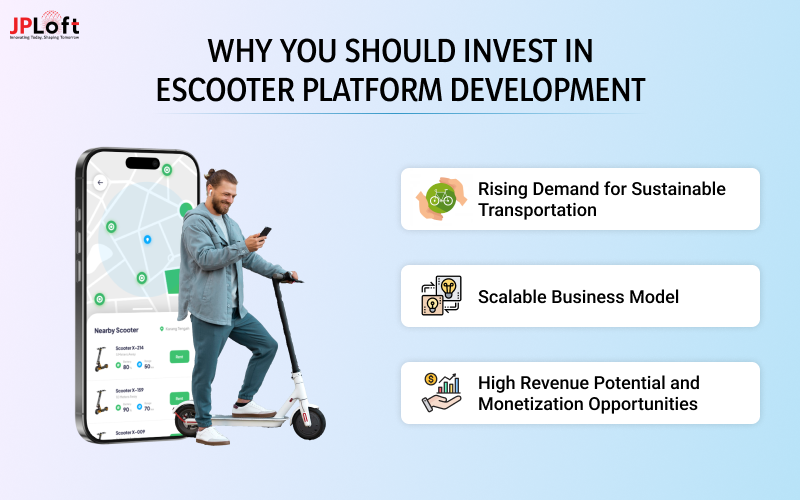
Here are three compelling reasons why key decision-makers should consider developing an eScooter app:
1. Rising Demand for Sustainable Transportation
As more people look for eco-friendly and sustainable travel options, EScooters are gaining popularity.
eScooter apps cater to the increasing number of users who prefer green transport alternatives, particularly in cities with high traffic congestion and pollution concerns.
By developing an eScooter app, you position your business to serve this growing demand and align with sustainability goals.
2. Scalable Business Model
An eScooter app offers a scalable business model that can grow with demand.
You can start small with a fleet of scooters in one area and expand to new locations as demand increases.
With options like pay-per-ride and subscription plans, your app can attract both casual and regular users, creating multiple revenue streams and opportunities for growth.
3. High Revenue Potential and Monetization Opportunities
eScooter apps provide diverse monetization options that can generate significant revenue.
From subscription plans and per-ride charges to in-app advertising and partnership promotions, these apps offer flexibility to maximize earnings.
As more cities adopt scooter-friendly regulations, the revenue potential continues to grow, making an eScooter app a valuable asset in today’s market.
Developing an eScooter app is a forward-thinking investment that meets market demand, supports sustainable transport, and provides room for scalable growth and profitability.
Who Can and Should Build an eScooter App?
Building an eScooter app isn’t just for major tech companies or urban mobility giants.
It’s an opportunity for various businesses and entrepreneurs to enter the growing market of sustainable, on-demand transportation.
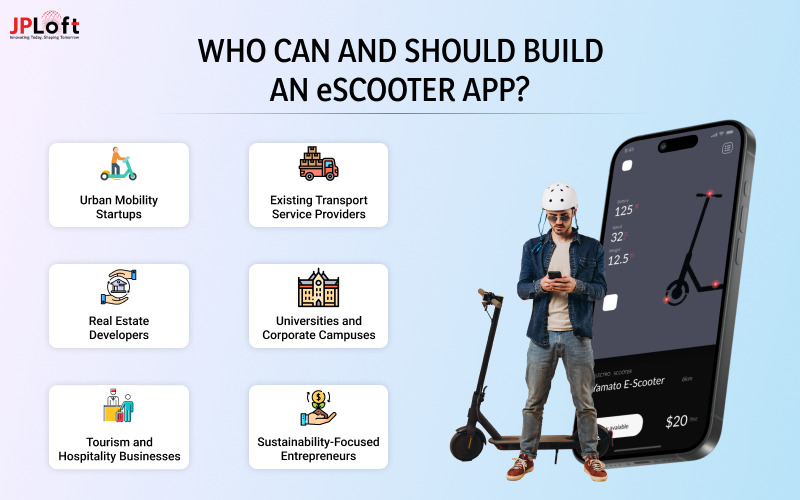
Here are some types of organizations and individuals who can benefit from creating an eScooter app:
1] Urban Mobility Startups
Startups focused on urban mobility can leverage eScooter apps to tap into the demand for eco-friendly commuting options.
Offering a fleet of scooters with a well-designed app can set your startup apart and attract city dwellers seeking convenient, sustainable transport options.
2] Existing Transport Service Providers
Companies that already operate in the transportation sector, such as car rental services, ride-sharing platforms, or bike rental businesses, can expand their offerings by adding EScooters.
By creating an eScooter app, these businesses can diversify their services and appeal to a broader audience looking for flexible short-distance travel solutions.
3] Real Estate Developers and Smart City Initiatives
Real estate developers and smart city projects focused on creating integrated urban experiences can benefit from an eScooter app as part of a broader infrastructure.
Adding an eScooter service can make residential, commercial, or mixed-use areas more appealing by offering a convenient way to navigate within and around properties.
4] Universities and Corporate Campuses
Universities and large corporate campuses can launch their own eScooter apps to facilitate easy transport across their grounds.
This is especially valuable for sprawling campuses where students, faculty, and employees need quick access to different locations without relying on traditional transportation.
5] Tourism and Hospitality Businesses
Hotels, resorts, and tourism companies can create eScooter apps to offer guests a fun and eco-friendly way to explore local attractions.
This added service can enhance the guest experience, making your brand stand out as a forward-thinking and sustainable option for travelers.
6] Sustainability-Focused Entrepreneurs
Entrepreneurs passionate about sustainable and eco-conscious solutions can tap into the eScooter market by developing a custom app.
With a focus on green mobility, an eScooter app can help you make a positive environmental impact while building a business that aligns with the values of today’s eco-conscious consumers.
For these businesses and individuals, an eScooter app is more than just a transportation platform, it’s a way to innovate, expand services, and contribute to greener cities.
With the demand for EScooters on the rise, now is the perfect time to explore this opportunity.
Step-by-Step eScooter App Development Process
Want to know how to create an eScooter app?
Building an eScooter app requires careful planning and execution to ensure it meets user needs, market demands, and operates smoothly.
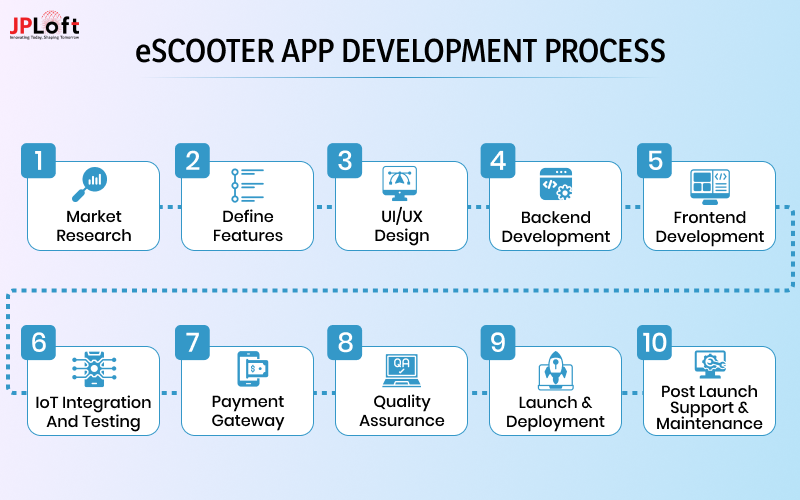
Here’s a detailed guide to every stage involved in creating a high-quality eScooter app:
Step 1: Research and Planning
The foundation of a successful eScooter app starts with thorough research and planning.
First, conduct market research to understand your target audience, which may include urban commuters, tourists, or residents in specific areas.
Gathering insights on user behavior and preferences will help shape the app’s features.
Dive into competitor analysis to see what top apps offer, noting their strengths and areas where they fall short.
This analysis will help you define your unique value proposition (UVP), and the specific benefit that will make your app stand out.
Set clear objectives for your app and establish a realistic budget. Identify short-term goals (like gaining initial users) and long-term goals (like expanding to new markets or launching premium features).
A well-defined budget ensures resources are allocated effectively and helps prevent unexpected costs down the road.
At the end of this stage, create a Product Requirements Document (PRD) that serves as the project blueprint, detailing features, design goals, and technical requirements.
Step 2: Define Features and App Scope
After establishing your app’s goals, outline the essential and advanced features required for a seamless user experience.
Essential features might include user registration, GPS-based scooter locating, QR code scanning for easy unlocking, ride history, and payment options.
These core functionalities are the foundation of a reliable eScooter app.
In addition to essentials, consider advanced features that set your app apart, such as geofencing to limit scooter access in specific areas, augmented reality (AR) navigation for added safety, or loyalty programs to reward frequent riders.
Identifying these features upfront prevents scope creep and helps prioritize development efforts.
Define specific user roles (like admin, user, and possibly fleet operators) to clarify how different people will interact with the app.
Step 3: UI/UX Design
An intuitive, user-friendly design is crucial for attracting and retaining users.
Begin with user flow mapping to visualize how a user will interact with each feature, ensuring a smooth and logical journey from registration to completing a ride.
After mapping, create wireframes, and basic sketches of your app layout.
These help outline the app’s structure and placement of key elements like navigation buttons and maps.
Next, move to high-fidelity prototypes that showcase the app’s visual identity, including colors, branding, and design elements.
Test these prototypes with a small group to gather feedback on usability and aesthetic appeal.
Accessibility is also essential; ensure the app is usable for all by choosing readable fonts, high-contrast colors, and intuitive layouts.
Prioritize accessibility as a core design principle to broaden your app’s reach.
Step 4: Backend Development
The backend of your app is the invisible powerhouse that handles data processing, user authentication, and other functionalities.
Set up a scalable server like AWS or Google Cloud, which can handle growing user numbers as your app expands.
Structure a reliable database to store user profiles, ride histories, and payment information securely.
Build APIs that connect the app interface (frontend) to the server (backend).
These APIs will be responsible for tasks like authenticating users, processing payments, updating scooter locations, and sending real-time notifications.
Integrate data security protocols like encryption and multi-factor authentication to protect sensitive user information, ensuring compliance with data protection standards.
Step 5: Frontend Development
Frontend development involves creating the interactive components of your app.
Use a cross-platform framework like React Native or Flutter to ensure the app runs smoothly on both Android and iOS devices, saving development time and costs.
This phase involves implementing the design, enabling interactive features like the map view for scooter locating, user profile management, and payment processing.
Prioritize responsive design so the app adapts seamlessly to different screen sizes, providing a consistent experience across devices.
Optimize performance by minimizing load times and eliminating unnecessary animations, ensuring the app is quick and responsive even under high traffic conditions.
Step 6: IoT Integration and Testing
IoT integration is a defining component of eScooter apps, enabling real-time tracking and operational control over each scooter.
Equip scooters with IoT modules to transmit location data, battery levels, and availability status to the app.
Implement a secure unlocking mechanism using QR codes or Bluetooth for easy access while maintaining safety.
Testing IoT connectivity is essential to verify that scooters respond promptly to app commands and location data updates accurately.
Collaborate closely with hardware providers to ensure IoT components are reliable and can withstand daily wear and tear.
This step requires extensive testing to prevent disruptions in real-world use.
Step 7: Payment Gateway Integration
Smooth payment processing is crucial for a frictionless user experience.
Choose reliable payment gateways like Stripe or PayPal that offer secure transactions and integrate them into the app.
Ensure PCI compliance to protect users’ payment information and avoid legal risks.
Test the payment flow from ride-booking to transaction confirmation to ensure seamless integration.
Consider including an in-app wallet option to allow users to preload funds, simplifying the payment process for frequent riders and increasing convenience.
Step 8: Testing and Quality Assurance
Testing is a critical step to verify that each component of the app works as expected.
Conduct functional testing to confirm that all features, from scooter locating to payment processing, operate correctly.
Usability testing with real users helps identify and resolve any issues that could impact ease of use.
Security testing ensures data protection, particularly in payment processing and user authentication.
Test the app’s compatibility across devices and operating systems to guarantee a consistent experience for all users.
Performance testing is also key; simulate high traffic to ensure the app remains stable under heavy use. A robust testing process is essential for delivering a reliable, secure app.
Step 9: Launch and Deployment
After testing, prepare the app for launch.
Optimize your app listing on app stores (Google Play and Apple App Store) by including relevant keywords, clear descriptions, and appealing visuals to enhance visibility.
Consider a soft launch to gather initial user feedback, allowing for last-minute adjustments before a full launch.
Monitor user feedback closely in the early days to address issues promptly and respond to user reviews.
Implement a marketing strategy, including social media campaigns, partnerships, and in-app promotions to attract users and boost downloads.
Step 10: Post-Launch Support and Maintenance
Once live, continuous support and maintenance are essential to keep the app running smoothly.
Regular updates improve performance, introduce new features, and address any security vulnerabilities.
Bug fixes are an ongoing task, as user-reported issues need to be resolved quickly to maintain high ratings.
Use analytics to monitor user engagement, app stability, and performance metrics to ensure optimal operation.
Continuously improve the app by adding features based on user feedback and industry trends, and provide accessible customer support to handle inquiries and technical issues.
This detailed process ensures your eScooter app is designed, developed, and maintained for long-term success, meeting both user expectations and market standards.
Cost to Build an eScooter App
The cost to create an eScooter app can vary widely based on the app’s features, technical requirements, and complexity.
Generally, expect to budget between $50,000 to $200,000 for a fully functional app with essential and advanced features.
A] Basic Cost Estimate
For a standard eScooter app that includes core features like user registration, scooter locating, GPS integration, payment processing, and IoT connectivity, costs usually range from $50,000 to $100,000.
This type of app provides the essentials needed for users to locate, rent, and ride scooters, making it a practical solution for small to medium-sized deployments.
B] Mid-Range Cost Estimate
A mid-range eScooter app with additional functionality, such as loyalty programs, predictive maintenance, or geofencing, may run between $100,000 and $150,000.
Apps in this range cater to a broader audience with added convenience and engagement features, making them suitable for businesses aiming to scale or serve larger markets.
C] High-End Cost Estimate
For more complex eScooter apps with advanced features like augmented reality (AR) navigation, multi-language support, real-time analytics, and custom integrations, the development cost could range from $150,000 to $200,000 or more.
High-end apps provide an immersive and premium user experience, suitable for large-scale deployments in urban areas or businesses aiming to offer an innovative, feature-rich app.
eScooter App Development Challenges and Their Solutions
Developing an eScooter app comes with its own set of challenges, particularly around safety, scalability, and regulation.
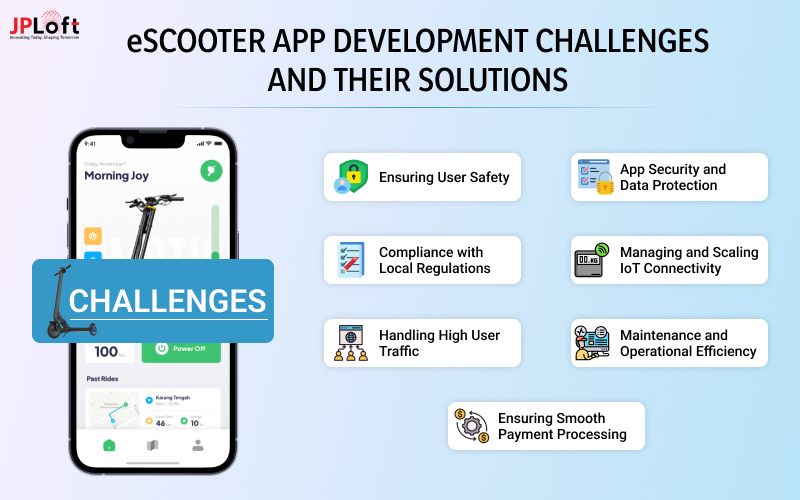
Below are some of the main challenges and practical solutions to address them.
Challenge 1: Ensuring User Safety
Safety is a top priority for any eScooter platform, as users rely on scooters in busy urban areas with traffic and pedestrians.
Accidents or unsafe riding can harm both users and public perception.
Solution:
Implement built-in safety features such as helmet reminders, speed limit notifications, and restricted zones (geofencing) where scooters automatically reduce speed. Educating users with in-app tutorials on safe riding practices also enhances safety.
Challenge 2: App Security and Data Protection
With sensitive user information, including payment data, app security is crucial. Security breaches can lead to data loss and erode user trust.
Solution:
Use multi-layered security protocols, such as data encryption, multi-factor authentication, and regular security audits, to protect user information. Secure payment gateways like Stripe or PayPal add an additional layer of transaction safety.
Challenge 3: Compliance with Local Regulations
Local governments often have specific rules for eScooter operations, including parking regulations, restricted zones, and fleet size limits.
Failing to comply can result in fines or operational restrictions.
Solution:
Research local regulations in each deployment city, and work closely with city officials to ensure compliance. Implement geofencing to automatically restrict scooters from entering no-go zones and set up alerts for restricted parking areas.
Challenge 4: Managing and Scaling IoT Connectivity
Real-time tracking and communication between the app and each scooter can be challenging to manage, especially as the fleet grows.
Connectivity issues can lead to delayed or inaccurate location updates.
Solution:
Use reliable IoT technology that supports high-volume data transfer. Partner with experienced IoT providers and conduct regular system tests to ensure stable performance. For large fleets, cloud infrastructure helps scale IoT connectivity efficiently.
Challenge 5: Handling High User Traffic
During peak times, such as mornings and evenings, user traffic can spike, potentially overwhelming app servers and causing delays or crashes.
Solution:
Utilize scalable cloud infrastructure like AWS or Google Cloud to handle fluctuating traffic volumes. Implement load balancing to distribute traffic evenly across servers, minimizing delays and ensuring a smooth user experience.
Challenge 6: Maintenance and Operational Efficiency
With numerous scooters in the field, keeping them operational and well-maintained can be costly and time-intensive, especially if each scooter’s status isn’t monitored in real-time.
Solution:
Implement predictive maintenance alerts in the app, which notify operators when scooters require servicing based on usage data. Regular maintenance schedules and real-time diagnostics reduce downtime and improve fleet efficiency.
Challenge 7: Ensuring Smooth Payment Processing
Payment issues, such as declined transactions or delays, can frustrate users and affect the app’s reliability.
Solution:
Integrate secure and reliable payment gateways and support multiple payment options. Test the payment flow extensively to ensure smooth transactions, and offer an in-app wallet to simplify payments for frequent users.
Addressing these challenges effectively ensures a more reliable, secure, and user-friendly eScooter app, fostering long-term user trust and operational success.
Technologies Trends for eScooter Apps
Creating a robust and user-friendly eScooter app requires a blend of modern technologies to ensure smooth functionality, security, and scalability.
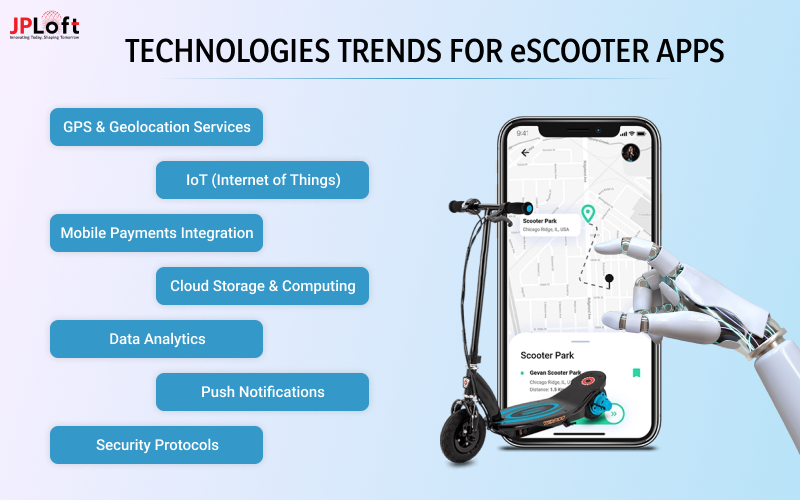
Here’s a look at the core technologies used to build an eScooter app:
1. GPS & Geolocation Services
These technologies are essential for real-time scooter tracking, helping users locate and navigate to the nearest available scooter. GPS integration also enables route tracking, offering users accurate travel data and ensuring they can easily find scooters in high-demand areas.
2. IoT (Internet of Things)
IoT technology connects scooters to the app, allowing remote access to essential features like locking and unlocking, monitoring battery levels, and conducting diagnostics. With IoT, scooters can communicate with the app to update their location, availability, and maintenance status in real-time.
3. Mobile Payments Integration
Secure payment gateways such as Stripe, PayPal, or in-app wallets provide a smooth, hassle-free payment experience. They allow users to pay for rides quickly and securely, while multiple payment options improve user satisfaction and retention.
4. Cloud Storage & Computing
eScooter apps generate a lot of data, from location tracking to ride histories. Cloud storage solutions ensure that this data is securely stored and easily accessible for both users and operators, enabling seamless data processing and app performance.
5. Data Analytics
Data analytics tools track user patterns, ride frequency, popular routes, and usage metrics. Analyzing this data allows companies to optimize scooter placement, identify high-demand times, and improve user experience based on real-time insights.
6. Push Notifications
Push notifications keep users informed about scooter availability, ride status, app updates, and promotions. They’re essential for user engagement and help companies retain active riders by providing timely information.
7. Security Protocols
eScooter apps handle sensitive data, so robust security measures are essential. Encryption, multi-factor authentication, and real-time fraud detection help ensure user data and payment information remain protected.
These technologies work together to create a seamless experience, making eScooter apps convenient, secure, and reliable for users and operators alike.
How to Monetize an eScooter App in 2024
Monetizing an eScooter app involves implementing various revenue streams that cater to different user preferences and enhance overall profitability.
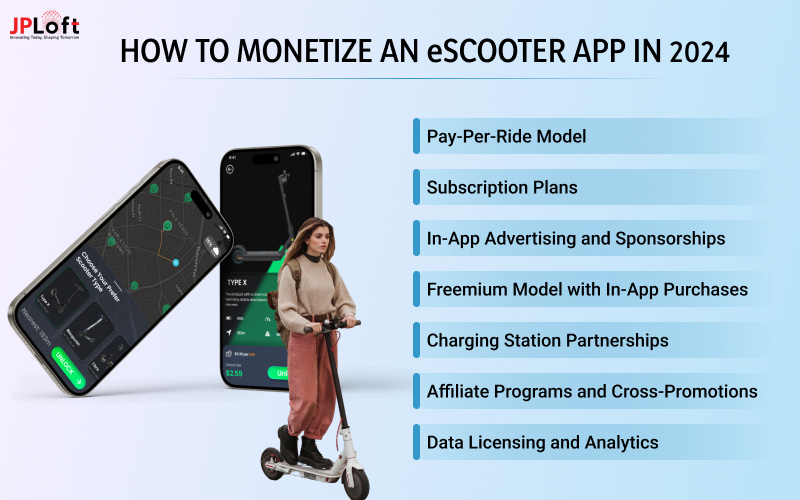
Here are several effective strategies to help you maximize returns from your app:
1. Pay-Per-Ride Model
The pay-per-ride model charges users based on the duration or distance of each trip, offering a flexible option for casual riders.
Typically, the user pays a base fee to unlock the scooter, followed by a per-minute or per-mile charge.
Example: Many popular apps, like Bird and Lime, use this model as it appeals to users who ride occasionally rather than committing to a subscription.
2. Subscription Plans
Subscription plans offer users unlimited or discounted rides for a weekly, monthly, or annual fee.
This model works well for frequent riders who use EScooters for daily commuting or multiple short trips throughout the day.
Example: Voi offers a subscription-based model, providing an “all-you-can-ride” plan that appeals to regular users and builds steady, predictable revenue.
3. In-App Advertising and Sponsorships
In-app advertising allows you to partner with businesses for targeted promotions, while sponsorships can include local brands or city-specific businesses that want exposure to eScooter users.
Advertisements could be displayed between rides, during booking confirmations, or in-app notifications.
Example: Collaborate with coffee shops, gyms, or local eateries to offer discount codes or promotions within the app, benefiting users and promoting nearby businesses.
4. Freemium Model with In-App Purchases
With a freemium model, users can access basic features of the app for free, while advanced features are locked behind a paywall.
For example, riders might pay for enhanced navigation options, priority bookings during peak hours, or exclusive discounts.
Example: Some apps allow users to pay extra for priority bookings, which guarantees scooter availability in high-demand areas.
5. Charging Station Partnerships
Partner with local businesses to place charging stations at their locations.
These partnerships benefit both parties: users gain more convenient charging options, while businesses see increased foot traffic from app users.
Example: Hotels, restaurants, and retail stores can host eScooter charging stations, where riders are encouraged to stop and explore the venue while their scooters charge.
6. Affiliate Programs and Cross-Promotions
eScooter apps can benefit from affiliate programs by partnering with related services, such as ride-sharing platforms or public transport systems, offering discounts or rewards for using multiple modes of transport.
Example: Offering discounted rides for users who connect their eScooter app with public transit passes or loyalty points with ride-sharing partners.
7. Data Licensing and Analytics
Aggregated data collected from the app, such as popular routes, ride frequencies, or peak usage times, can be valuable for city planning and infrastructure improvements.
Licensing this data to urban planners or municipal authorities offers an additional revenue stream while supporting local development.
Example: Share anonymized data with city authorities to support sustainable transport projects and urban development initiatives.
These monetization strategies provide various options to attract different user segments, from occasional riders to frequent commuters.
By implementing a combination of these approaches, you can diversify revenue streams and maximize profitability, helping your eScooter app achieve long-term financial success.
Looking for an eScooter App Development Partner?
Are you ready to bring your eScooter app idea to life?
At JPLoft, a leading eScooter app development company, we specialize in creating high-performance, custom eScooter platforms designed to meet the demands of today’s mobility market.
Our team combines expertise in IoT integration, real-time GPS tracking, and advanced features like geofencing and predictive maintenance to deliver a seamless user experience that sets your app apart.
Get in touch with JPLoft, your trusted eScooter app development company, today to start building a sustainable, innovative transportation solution for your business.
Conclusion
Building an eScooter app is a smart move for any business looking to enter the fast-growing market of sustainable urban transportation. By understanding the essential features, development process, and monetization strategies, you’re well-equipped to create an app that meets user needs and thrives in a competitive space. From initial planning to post-launch maintenance, each step plays a crucial role in delivering a smooth, user-friendly experience that keeps riders coming back.
With the right strategy and development partner, your eScooter app can become an invaluable tool for commuters, tourists, and eco-conscious users alike. Ready to take the leap and bring your app to life? Now’s the perfect time to start building a solution that drives growth and innovation in the mobility market.
FAQs
The cost to create an eScooter app varies depending on its features, complexity, and integration needs. Generally, prices range from $50,000 to $200,000 or more for a fully functional app with essential and advanced features.
Core features include user registration, GPS-based scooter locating, payment integration, QR code scanning for unlocking scooters, ride history, and in-app customer support. Advanced features can include predictive maintenance, geofencing, and loyalty programs.
On average, it takes about 4 to 6 months to develop a standard eScooter app, including design, development, testing, and deployment. Apps with complex features may take longer.
Common monetization methods include pay-per-ride, subscription plans, in-app advertising, partnerships with local businesses for charging stations, and affiliate programs. You can also consider offering premium features or a freemium model.
Challenges include ensuring user safety, maintaining data security, complying with local regulations, managing real-time IoT connectivity, and handling peak traffic loads. A reliable development partner can help overcome these challenges effectively.
Yes, each city or region may have specific regulations regarding eScooter fleet operations, parking, and restricted zones. Ensuring compliance is essential to avoid fines or restrictions on operations.






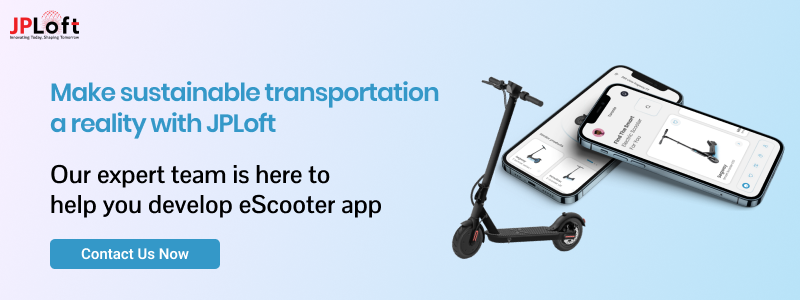
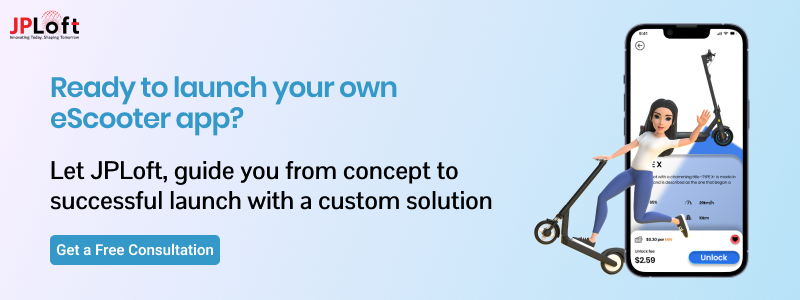

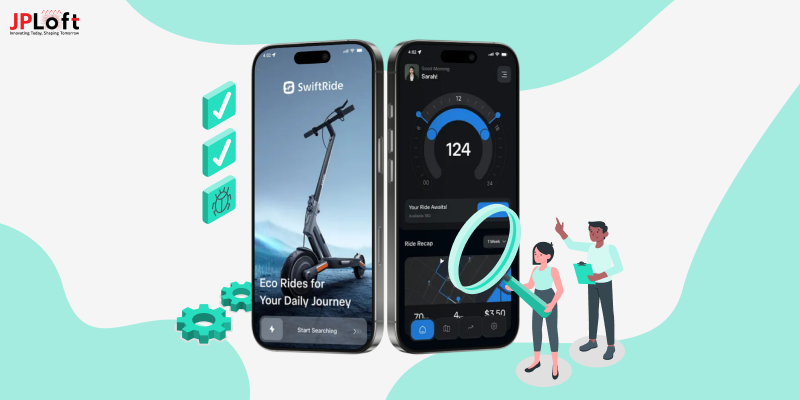
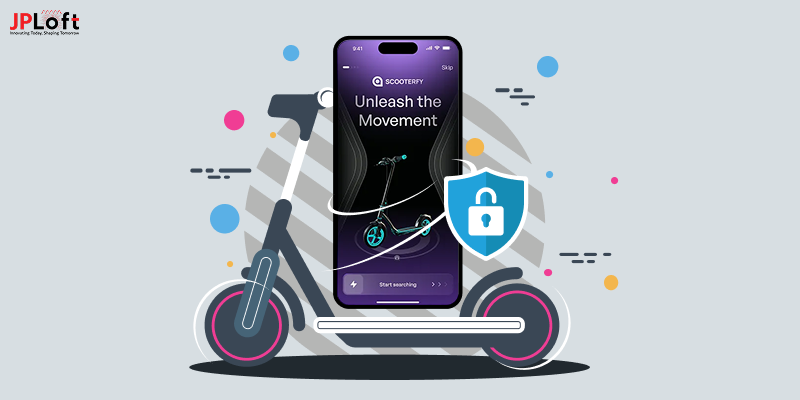
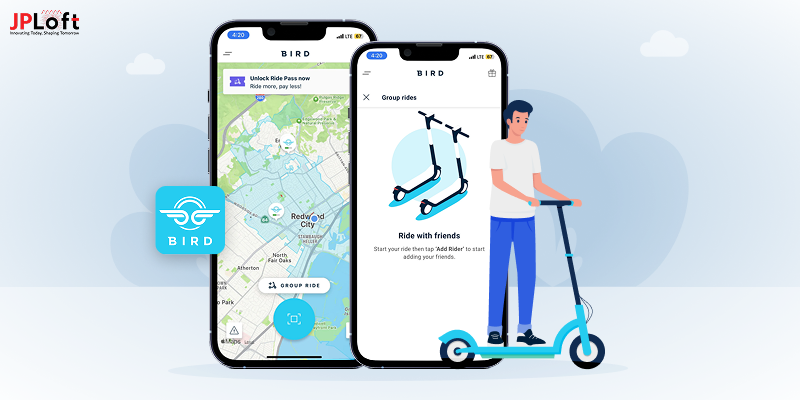


Share this blog